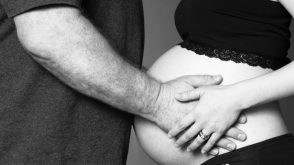. Did you know that one of the elements that impact the children’s happiness is how were they treated in their life? According to psychologists, there is a huge number of adults that experienced trauma as a child. Unfortunately, trauma can be forwarded during the different stages of life by making them lose the sense […]

.
Did you know that one of the elements that impact the children’s happiness is how were they treated in their life?
According to psychologists, there is a huge number of adults that experienced trauma as a child.
Unfortunately, trauma can be forwarded during the different stages of life by making them lose the sense of security, self-confidence and motivation.
Scroll down to see some behaviours of people who experienced trauma as a child.
Which Are 4 Behaviours Of An Adult Who Experienced Trauma As A Child?
1. Problems With Chronic Tension
Trauma originating outside of the body (e.g., abuse, assault, stress) causes the brain to activate the fight-or-flight response. Stress hormones such as cortisol and norepinephrine flood the body, which prepares to defend itself. During this time, our body automatically tenses up.
The problem is that tension doesn’t always dissipate once the threat is removed or neutralized. In this case, the brain’s neural networks will maintain a state of hypervigilance, acting as if the threat remains and preparing the body accordingly.
2. Feeling Of Being Watched Or Judged By Others
Research demonstrates that childhood trauma contributes to Social Anxiety Disorder or SAD. Parental abuse (e.g., denigrating, insulting, swearing, verbal aggression) and emotional neglect (i.e., not feeling cared for, loved, or nurtured) relate directly to the onset of SAD.
Victims of childhood trauma who demonstrate social withdrawal often do so out of anxiety and fear. SAD patients report feeling “an intense, persistent fear of being watched and judged by others,” and may isolate themselves to prevent this feeling.
3. Dealing With Panic Disorders
Both anxious and non-anxious brains are continually learning. Unlike the anxious person, however, a non-anxious individual can more easily ‘unlearn’ life’s lessons that it encounters. An anxious person has a hard time with this.
To illustrate, imagine a situation where two people who have received a poor performance review are scheduled to follow up with their manager.
The non-anxious person is much more likely to interpret the meeting as a non-threatening, neutral event unless told otherwise. The anxious person, on the other hand, may begin to panic about receiving a second negative review.
Worse, their anxious brain may be unable to concentrate on anything other than the meeting. They remain in a constant state of worry unless told otherwise.
4. Frequent Confrontation With Fear
It is human nature to circumvent the things we fear, but childhood trauma victims take this avoidance to the extreme. While you may have an innate fear of going to the dentist, you’ll probably still go. Why? Because the benefits of taking action overrule the fear response.
Far too often, adults with a history of trauma allow fear to dictate their actions. Using the dentist visit scenario, they’re more likely to give into the impulse to avoid the dentist; essentially allowing fear to cripple their intentions. The strong urge to avoid things seen as even remotely threatening can seriously impede on quality of life.
.



